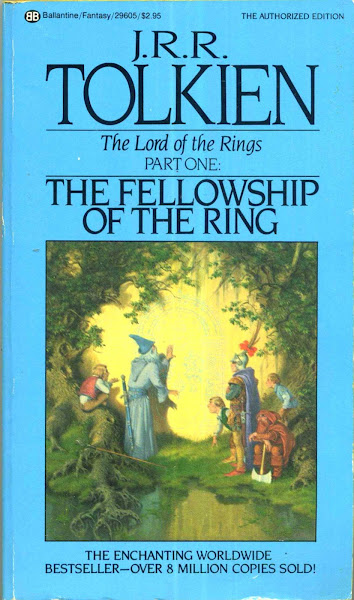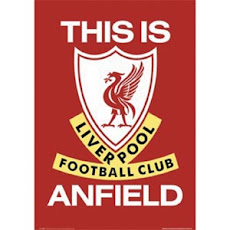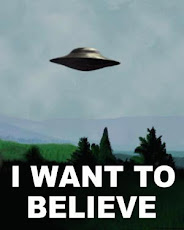 |
| The 1947 Ateneo Blue Eagles. Baby Dalupan is encircled in yellow. |
Post-War Blues I
Moro Lorenzo and the Luckless Blue Eagles
by rick olivares
The empire of the rising sun had set in Asia and the Pacific but over the newly liberated Philippines, a bright new day had risen. The Ateneo campus in Padre Faura was in ruins much like the rest of the war-torn capital. But hope was in fresh supply.
Already the Quonset huts (made from galvanized iron sheets, thatch materials, wire screens, and wood) that subbed for classrooms were brimming with students eager to pursue their studies that the war put on hold. Ateneans who had transferred to San Beda, La Salle, and other schools (Ateneo opened a couple of years later than the other two after the war) were coming back in droves. Among these balik-Ateneans was Virgilio “Baby” Dalupan who whiled the time away at Far Eastern University (as the former Institute of Accounts was now known). “How can you not want to go back?” he said. “That’s where I belong.”
Ateneo had given her finest sons to the defense of the motherland. Men like Cesar Basa who along with Jesus Villamor flew headlong into a battle of no return. Ramon Cabrera who was brutally murdered after refusing to divulge the names of Filipinos in the underground movement. And Manuel Colayco who had died during the liberation of UST which was used as an internment camp by the Japanese.
But in the summer of 1947, there emerged a new set of heroes, those of the athletic kind to give the blue and white faithful something else to cheer about.
Fr. John McCarron S.J., Ateneo’s Sports Director, sounded off the clarion for try-outs for the Blue Eagles. 30 Ateneans heeded the call and underwent some pretty back breaking trials in the campus’s battered gymnasium under the watchful eye of the pre-war skipper of the Hail Mary squad, Simon LaO. Despite LaO being back in the fold, the excitement surrounding the team was the inclusion of Luis “Moro” Lorenzo who had finally moved up from the junior ranks. “Moro Lorenzo was an exciting player,” recalls Moying Martelino, former Basketball Association of the Philippines Secretary General who was in the Ateneo high school then. “He would shuffle the ball with his hands to confuse his opponents then suddenly shoot it from any angle! The incredible thing about that was pasok pa yung tira niya! You must have strong arms and very good accuracy to do that.”
The team’s first goal was to participate in benefit games for the reconstruction drive of the Ateneo and use these games as a springboard for the first post-war NCAA basketball tournament. But the beneficiary wasn’t to be the Ateneo campus in Manila. Fr. William Masterson S.J., Ateneo Rector, had cast his eye towards a sprawling estate in Barangka overlooking the Marikina Valley. Fr. Rector, with the gift of foresight, knew that the spacious lot with its majestic view of the verdant valley below would be perfect for the expansion of the Jesuit school which would be celebrating its 100th year in the Philippines in over a decade’s time. The rebuilding of the Ateneo had brought smiles to the mournful lips of Fr. John Morning, the Dean of the College, who had seen Ateneo razed to the ground twice already (the great fire of 1932 and World War II) and as he blessed the newly-formed basketball team, students couldn’t help but notice the bounce in his step. The war was over and the Jesuits could get back to the business of educating young men eager to get their country back on its feet.
On September 6, 1947, the Ateneo sent-off its ambassadors in shorts with a colorful pep rally at the battle-scarred gym with its bullet-riddled roof. With the charismatic Totoy Avellana, Boy Tuason, and Nano Lopez bursting out into “Blue Eagle the King” the Blue Eagles, all 16 (Team Captain Moro Lorenzo, Joe Concepcion, Baby Dalupan, Rudy Daza, Ric Francisco [father of Danny Francisco], Pepot Gonzalez, Minging Imperial, Joe De Jesus, Simon LaO, Louie LaO, Bien Ocampo, Johnny Raquel, Vic Silayan [who would later gain recognition as one of the finest actors of his generation], Pete Villarama, Vicky Zamora, and Pepet Gaston) of them trotted onto the floor. The Guidon noted that the cheer rally made everyone realize the importance of rebuilding the Ateneo “so that the spirit might be felt, honored, and possessed not only by us ‘lucky guys’ but also by other boys following us – Ateneans of the future.”
This edition of the Blue Eagles was the de facto defending champs since the last NCAA basketball tourney concluded barely over a month before the Philippines was dragged into a global conflagration. That champion Blue Eagle team was skippered by Simon LaO and featured stalwarts like Bobby Jones, Duke Cortez, Tony Montenegro, Jimmy Hampton, and Nilo Verona (who would later coach the 1969 Blue Eagles to victory). It was also Simon LaO who beat La Salle in a most memorable football championship when he booted the winning goal from way out just a day before the war came to the Philippine shores. And six years later, he wanted nothing than to conclude his collegiate career with another title.
After reciting the pledge of Loyola and a stirring send-off by Fr. McCarron, the Blue Eagles with Coach Alfred Del Rosario leading the way, went on a barnstorming tour of not just Manila but also in the provinces where people welcomed them like wartime liberators. The team won legions of new fans but also paved the way for many a southern Filipino boy to dream of donning the Ateneo jersey one day. And as a bonus, guard Baby Dalupan would meet his future bride in Lourdes Gaston whose brother Choly would don the blue and white in a few years time.
Initially standing in the Blue Eagles’ way was that storied foe from Mendiola, the San Beda Red Lions of Manuel Llora and Rafael Alberto. What followed was a titanic battle that matched the pre-war Ateneo-San Beda tussles in color, booming cheers, and heart-stopping action at the Rizal Memorial Coliseum. When the final gun ended the match, the Blue Eagles came out on top, 31-29 behind the deadly accurate one-handed shots of Moro Lorenzo (at this time, he was the only player who threw up these kind of shots) and the stellar defense of Baby Dalupan whose pick pocketing skills bordered on grand larceny.
On board the nascent Philippine Air Lines, the Blue Eagles invaded the southern islands of Bacolod, Iloilo, Davao, Zamboanga, Cagayan, and Cebu playing against local teams and winning 12 out of 15 games. Even better, they managed to raise badly needed funds from gracious alumni and patrons who believed in the Jesuit education. With a successful pre-season and the emergence of Lorenzo as a scoring force, Ateneans were salivating at the prospect of an unheard of 7th league cage crown.
During those days, it cost 50c to watch a basketball game and then as it is now tickets were in short supply so they had to raffle off tickets to sports-starved Ateneans. Those who weren’t able to get inside the venue gathered outside and waited for news of the game’s progress from those lucky enough to get in. Determined to get in on the action, Ateneans would cheer also from the outside drawing many a look from passers-by. With a nervous Fr. John Delaney S.J. looking on from the tunnel leading to the dugouts at the Rizal Memorial Coliseum, Ateneo began its defense of the crown on September 11, 1947 with a return match against San Beda. If the Red Lions were hoping for some payback that was easier said than done. One would have thought that the old hoop house along Vito Cruz and Taft was being shelled by long range artillery for Lorenzo, Simon LaO, Pepot Gonzalez, Ric Francisco, and Bien Ocampo unleashed quite a barrage of long toms that the Red Lions failed to recover from. The Bedans tried to mount a couple of spirited second half rallies only to be smothered by Dalupan who once more reprised his role as game hero by stripping opposing ball handlers of the leather spheroid to scoot in for unmolested lay-ups.
The battle wasn’t just relegated to the hardcourt but at the stands as well. Sensing their team faltering against the relentless Blue Eagle onslaught, the Bedan cheerleaders erupted with a resounding cry of “Animo San Beda! Beat Ateneo!” Ateneo cheerleader Totoy Avellana smirked, motioned for the gallery for silence then signaled for a thunderous cheer of “Fight!” “What takes them five words to cheer, we only do it in one,” crowed Avellana after the game.
Olegario “Ole” Orbeta, who played clean-up in the juniors team, recalled the buzz on the campus. “That win was like we had a chance to go all the way that year. And Moro Lorenzo… was like a matinee idol in school.” Not to mention from their neighbors just across the wall. Assumption girls suddenly had their new “pin-up boy” from the Ateneo.
The revelry was short-lived. Four days later, the Jose Rizal Heavy Bombers strafed down the Blue Eagles 40-39 in overtime. From the opening gun, the Bombers behind Calilan, de la Rosa, and Victoria lit up the blue and whites from the outside. Blue Eagles Coach Del Rosario, calm despite the barrage from a foe that seemed on target with every shot, tapped Lorenzo who came off the bench and ignited a furious rally ending the 3rd canto behind 28-29. “We got ‘em where we want them, fellas,” encouraged Lorenzo sweat dripping from his brow. With “Fabilioh” belting from the bleachers, Lorenzo took to the floor with Joe De Jesus, Pepot Gonzalez, Ric Francisco and Louie LaO to start the fourth and final quarter. Moro nailed a couple of booming outside shots that catapulted Ateneo to a 34-31 lead for the first time in the game. Still the Bombers refused to fold under the pressure. With 15 seconds left in the game, JRC wrested back the lead 39-37. With time running out and Lorenzo covered by a tight guarding Francisco Calilan (the father of later Blue Eagles coach Cris Calilan), the ball was swung to Louie LaO nailed a shot from some 30 feet out to send the game into overtime.
The five minute extension was an exercise in defensive basketball. So fierce and tight was the defense on both sides that no one could score. With time running out, Pepot Gonzalez was whistled for a foul that sent JRC’s De La Rosa to the line who only canned one freebie. But that was more than enough to secure the win for the Shaw Boulevard-based squad. With the jubilant Heavy Bombers celebrating as if they had won the championship, the Hail Mary team sat dumfounded. “The aura of invincibility was stripped,” lamented Dalupan. In the locker room, a morose Pepot Gonzalez stripped off his Chuck Taylors and wept.
In the single round season, the team at 1-1 could ill afford a loss what with dangerous Mapua lurking and a game against the highly-fancied Green Archers looming in the horizon. There was a break in the games and the two week lay-off gave the Blue Eagles time to heal from that stinging loss. On September 29, 1949, the Cardinals and the Blue Eagles squared off in what has become a storied game that has bordered on the mythic. The Cardinals edged the Blue Eagles 43-40 when Moro Lorenzo ran out of gas in the fourth quarter. It was that game that a livid Totoy Avellana had the Ateneo gallery cheering their lungs out long after the game had ended. Coliseum officials had to kill the lights to send the dazed Ateneans stumbling home in disbelief. “It was ours!” thundered Avellana. “Ours. Dammit. And that really hurt.”
The loss was doubly painful for not only did Ateneo absorb its second straight setback but they were up against the undefeated Green Archers led by Tito Eduque, Eddie Decena, and Eddie Sharruf. The game had a super-charged atmosphere for the rivalry, dormant since 1941, was white-hot as ever. La Salle was still smarting from that sudden death win by Ateneo to claim the ’41 football crown. Ateneo on the other hand still sought to repay the Archers for their chucking fried chickens at their Padre Faura campus after the upset loss for the 1939 basketball title. The cheerleaders on both sides wasted no time in getting their galleries all pumped up. Totoy Avellana’s howitzer for a voice called for Ateneans to launch into the “Artillery Yell.”
From the opening tap ball (as it was called then), Ateneo cranked up its defense by several notches and held DLS to a solitary point in the opening quarter. When Simon LaO drained a shot from well beyond today’s three-point range to cap the Blue Eagles’ 14-point explosion in the 2nd canto it was as if to say that there was no way Ateneo was going to lose this game. With time perilously running out on the Taft-based squad, the Ateneo cheerleaders led the gallery in singing a song that was part cheer and part jeer:
The Eagle will fly.
Too High, Too High!
It never will fall.
Will fall! Will fall!
Your hands will shake!
Will shake! Will shake!
Your arrows will break!
Will break! Will break!
Green Archers, Good bye!
Good bye! Good bye!
The Eagle will fly.
Too High, Too High!
And the arrows did break with the blue & whites romping away with a 12-point win 32-20. Now at 2-2 and the losing skein stopped at the expense of its rival, Ateneo next trained its artillery yell at the Letran Knights for a chance to play for championship. At this point, La Salle was on top of the standings with a 3-1 card. Mapua toted an identical 2-2 slate (the Cardinals lost to La Salle and Letran) with their Padre Faura rivals.
If anyone thought that the Blue Eagles were emotionally spent after the La Salle game then they were badly mistaken for they shellacked the Knights 52-35. With “Arriba Letran!” reaching a deafening crescendo after going up 4-0 at the start of the game, the Hail Mary squad finally got its offensive might going when Baby Dalupan broke the scoring drought with a nifty reverse lay-up. Before long, the Ateneans let loose a torrent of outside shots from their shock troops (bench players) like Pete Villarama, Bien Ocampo, and Louie LaO. Rudy Daza took centerstage for Ateneo (in the absence of Pepot Gonzalez who was nursing a sprained ankle) in this game when he handcuffed the Knight’s prolific Louie Tabuena. The Knights groped for points and fought back behind the efforts of Aldiosa and Quiogue, but the LaO brothers – Simon and Louie --- finished off the Knights with booming shots that drew louder cheers from the blue and white gallery. With win no.3 assured, “Roll Out the Victory” wafted from the bleachers.
The win assured Ateneo of a one-game play-off on October 23, 1947 with their erstwhile conquerors the Mapua Cardinals for the right to play La Salle for the NCAA Basketball Championship. But beating them was altogether something else. Mapua now coached by former UP Maroon and Greens star player Johnny Schlobohm, played a bruising game with their stratospheric frontline of Seeberger and Lim and featured two former Blue Eagles in Rafael “Jing” Roco (the father of actor and Atenean Bembol Roco) and Ben Gadi. All throughout the season, Ateneo lived and died with its outside shooting. With Moro Lorenzo and Ric Francisco misfiring, Coach Alfred Del Rosario opted to take the game inside but the lane incursions of Dalupan and Ocampo were smothered. Simon LaO, in his final playing year, refused to give up and kept the Blue Eagles’ flickering hopes alive by going on a one-man scoring binge but Mapua was hitting on all cylinders this day as they routed Ateneo in the final quarter. It was a twin kill by the Intramuros-based squad. Their junior team, the Redbirds had earlier eliminated the Blue Eaglets from championship contention.
With Mapua’s victory cheer belting from the stands and the Ateneans weeping on the bench, one of the Blue Eaglets who stayed on to watch and cheer his senior brothers surveyed the heart-rending scene before him. What started out as a season filled with hope and promise ended when the team limped home. Simon LaO was graduating that year and everyone hoped that a championship would be a fitting send-off for one of its favorite sons. Moro Lorenzo had an up and down rookie season and he felt he let the team down during the season’s biggest game when his offense vaporized. He would take his game up to a higher level over the next few years even leading the league in scoring but still team Ateneo wouldn’t win its 7th crown. Rusty Cacho, who was an emerging star with the juniors team, watched his crestfallen schoolmates and comrades-in-arms from the bleachers, wiped the tears that welled up his eyelids and vowed to lead the blue and white back to glory one day.
Aftermath: La Salle claimed its second NCAA basketball title at the expense of the Mapua Cardinals. Jing Roco who played with the Cardinals that year would return to coach the Ateneo two years later and would win titles in 1957 & 58 with players like the legendary Ed Ocampo, scoring machine Bobby Littaua, the man in the middle Jimmy Pestaño, and tough-as-nails Poch Gayoso. The members of the 1947-48 Blue Eagles moved on to the second semester sports such as football. The Blue Booters, coached by former star player Arsenio “Arsenic” Lacson, also failed to defend their crown when they lost to La Salle 0-1 in the final game of the elimination round. Baby Dalupan was team captain that year and still wonders to this day how he made the line-up (actually Arsenic liked his grittiness and toughness which the coach believed was a hallmark of a great player). Later in the year, Ateneo and La Salle took part in a benefit game to aid in the reconstruction of St. Scholastica’s College which was ruined in the war. La Salle won their second cage title of the year when Ateneo, leading almost all throughout, collapsed late in the game. The High School Blue Eaglets evened things out by thrashing the La Salle Greenies to cop the High School trophy behind Ning Ramos, Greg & Tito Tañada, Rusty Cacho and the rebounding king, Ole Orbeta. Cacho would make good his promise when he led the Blue Eagles to back-to-back titles in 1953 & 54 against the San Beda Red Lions that had the great Caloy Loyzaga and two Ateneans: Lito Banggoy and Bonnie Carbonell. How they ended up wearing the red and gold is another (sad) story.









No comments:
Post a Comment